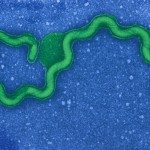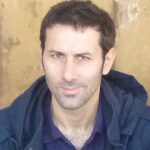Link to Pubmed [PMID] – 26211921
Epidemiol. Infect. 2016 Feb;144(3):661-9
We report herein the investigation of a leptospirosis outbreak occurring in triathlon competitors on Réunion Island, Indian Ocean. All participants were contacted by phone or email and answered a questionnaire. Detection and molecular characterization of pathogenic Leptospira was conducted in inpatients and in rodents trapped at the vicinity of the event. Of the 160 athletes competing, 101 (63·1%) agreed to participate in the study. Leptospirosis was biologically confirmed for 9/10 suspected cases either by real-time PCR or serological tests (MAT or ELISA). The total attack rate, children’s attack rate, swimmers’ attack rate, and the attack rate in adult swimmers were respectively estimated at 8·1% [95% confidence interval (CI) 4·3-14·7], 0%, 12·7% (95% CI 6·8-22·4) and 23·1% (95% CI 12·6-33·8). Leptospirosis cases reported significantly more wounds [risk ratio (RR) 4·5, 95% CI 1·6-13], wore complete neoprene suits less often (RR 4·3, 95% CI 1·3-14·5) and were most frequently unlicensed (RR 6·6, 95% CI 2·9-14·8). The epidemiological investigation supported that some measures such as the use of neoprene suits proved efficient in protecting swimmers against infection. PCR detection in rats revealed high Leptospira infection rates. Partial sequencing of the 16S gene and serology on both human and animal samples strongly suggests that rats were the main contaminators and were likely at the origin of the infection in humans.

